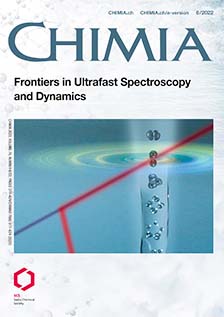Spin-Mapping Methods for Simulating Ultrafast Nonadiabatic Dynamics
DOI:
https://doi.org/10.2533/chimia.2022.582PMID:
38069729Keywords:
Nonadiabatic dynamics, Quantum-classical, Spin mapping, Light harvesting, Nonlinear spectroscopy, Strong field, Conical intersectionsAbstract
Many chemical reactions exhibit nonadiabatic effects as a consequence of coupling between electronic states and/or interaction with light. While a fully quantum description of nonadiabatic reactions is unfeasible for most realistic molecules, a more computationally tractable approach is to combine a classical description of the nuclei with a quantum description of the electronic states. Combining the formalisms of quantum and classical dynamics is however a difficult problem for which standard methods (such as Ehrenfest dynamics and surface hopping) may be insufficient. In this article, we review a new trajectory-based approach developed in our group that is able to describe nonadiabatic dynamics with a higher accuracy than previous approaches but for a similar level of computational effort. This method treats the electronic states with a phase-space representation for discrete-level systems, which in the two-level case is analogous to a spin-½. We point out the key features of the method and demonstrate its use in a variety of applications, including ultrafast transfer through conical intersections, damped coherent excitation under coupling to a strong light field, and nonlinear spectroscopy of light-harvesting complexes.
Funding data
-
Horizon 2020 Framework Programme
Grant numbers 801459 FP-RESOMUS
Grant numbers 801459 FP-RESOMUS
Downloads
Published
How to Cite
Issue
Section
License
Copyright (c) 2022 Johan E. Runeson, Jonathan R. Mannouch, Graziano Amati, Marit R. Fiechter, Jeremy O. Richardson

This work is licensed under a Creative Commons Attribution 4.0 International License.







